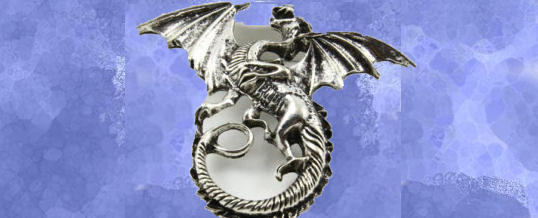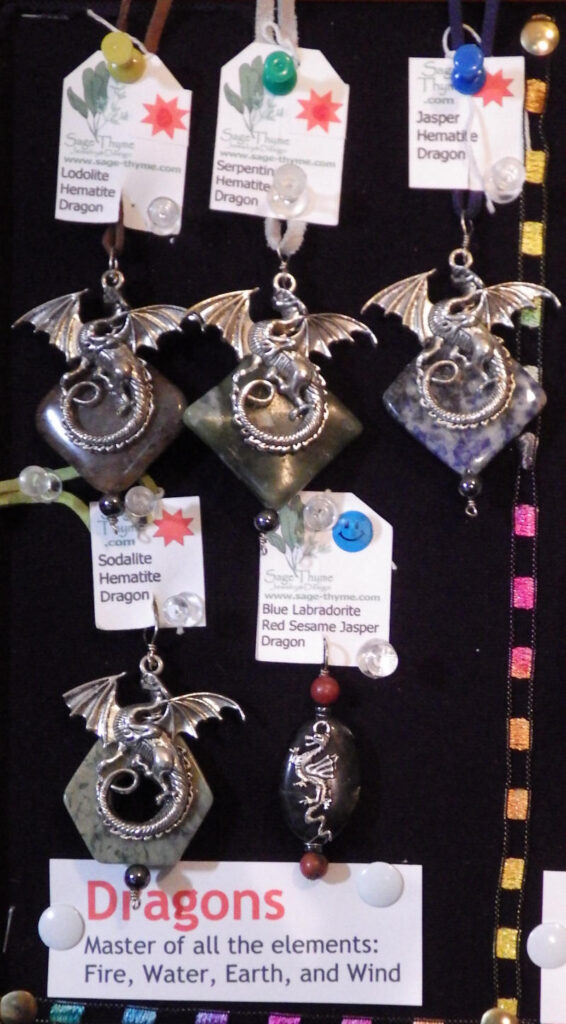The Mythical Dragon

Why a dragon? When I started creating my spirit pendants, I had not thought at all of including dragons. After all, dragons are only mythical creatures. But after numerous requests I started making dragon pendants, and began researching their symbolism and metaphysical properties. I discovered that while dragons are a part of many cultures, both east and west, dragons aren’t viewed the same in each culture, nor are the images of dragons as they are depicted the same from one culture to the next.
Celtic and Western Dragons
Dragons are revered by the Celtic people, appearing throughout Celtic Mythology. The Celts believe that dragons act as guardians of wisdom and knowledge, and serve as symbols of fertility and power. Indeed, not only is the dragon the symbol of power of the chieftain, but “Pendragon” is the title given to ancient British or Welsh princes holding or claiming supreme power.
In the Celtic tradition dragons are seen as masters of all the elements: Fire, Water, Earth, and Wind/Air. The ancient Druids believed that the Earth itself was like the body of a dragon, building their sacred stone circles upon the power nodes of the dragon’s body. The Druids also believed that dragons connected us with the Earth’s magnetism and its healing waters.
With the influence of Christianity, things changed in the Western world. Dragons were now associated with Satan, pagan evil, as symbols of sin and corruption, as well as malice and trickery. Although the early Christians in European cultures perceived dragons as a destructive force, they were also considered guardians, representing good forces, symbolizing strength, ferocity, and wealth. Admired for their imposing strength, European people used dragons to represent nobility and authority in heraldry and military signage.
Chinese and Japanese Dragons
Asian cultures worship dragons as spiritual symbols of nature, balance, eternity and metamorphosis. Dragons are viewed as friendly and protective spirits that help humans by bringing rain to the Earth and controlling bodies of water, rainfall, typhoons, and floods.
In Japan, dragons are symbols of strength, courage, and magic. Unlike the dragons found in Western mythology, Asian dragons don’t have wings, but interestingly, most are believed to fly magically due to a knot on top of its head called Chi’ih. There are two basic types of Japanese dragons: the one that flies is found in the sky or clouds; the other is found in bodies of water or rain, residing in large bodies of water such as lakes and oceans.
The Chinese used the dragon as a symbol of strength, power, and good luck, often co-opting it as the imperial symbol. In Chinese mythology and legend, the strongest and most noteworthy warriors and leaders were compared to the dragon.
Summary
Dragons symbolize strength, courage, and fortitude. Dragons are also messengers of balance and magic, encouraging us to tap into our psychic nature and see the world through eyes of mystery and wonder.
Dragons possess great vision along with the power of prophecy, thus helping the wearer of dragon totems to bring swift change and transmutation to their lives. Its fierce, majestic presence also brings virtuous qualities, such as bravery, intelligence, and ambition.

